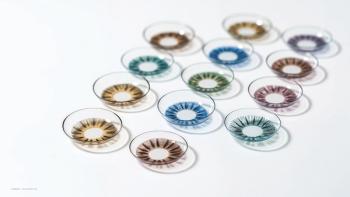
Diehl-Date-Miller nomogram for IOL power calculation
A retrospective study confirms the formula's accuracy in post-LASIK eyes
As determining target refractive error is a key challenge facing clinicians operating on such eyes, in the past a number of formulae have been developed to aid in this process by increasing predictability. To develop his own polynomial equation, Dr Kevin M. Miller (working with Dr Joseph W. Diehl and colleagues) originally conducted a regression analysis,1 using data from patients who had attended his clinic for cataract surgery after having previously undergone LASIK. Dr Miller determined the extent of change these patients had experienced in their manifest refraction spherical equivalent (MRSE) after their refractive procedure and then used that information to calculate the true target refractive error that would have allowed the patient to achieve emmetropia.
"We generated this Diehl-Miller formula and it worked on our dataset, of course, because regression formulae by definition always work on the dataset from which they're derived," explained Dr Miller. "The real question for us, and the reason for the follow-up study, was whether the formula would also work as well for a completely separate dataset of eyes."
To confirm the benefits of the nomogram, by establishing that the formula was accurate and could be generalized for use in other eyes, Dr Miller (working with Rishabh C. Date and colleagues) repeated the study in a new set of post-LASIK eyes (patients, n = 18; eyes, n = 23) undergoing cataract surgery. The purpose of this was to generate a separate polynomial equation to be used for comparison against the previous formula.
"It turns out that the two equations we'd generated from the separate datasets weren't different at all. So that was confirmation that our initial regression formula was accurate and generalizable," noted Dr Miller.
As reported in the Journal of Cataract and Refractive Surgery,2 the target refractive error calculated by Diehl-Miller differed from the true target refractive error by an absolute mean of 0.481 D ± 0.376 (SD).
"After the two equations proved to be accurate, we took the combined data from the first two assessments and put them together into one big dataset to generate yet another regression formula. The second-order polynomial equation we generated is essentially the same as the other two but slightly more refined," explained Dr Miller. "With this refined Diehl-Date-Miller formula, the calculated target refractive error fell within ±0.50 D of the true target in 49% of patients and within ±1.00 D in 93% of patients."
In addition to the accuracy of the equation itself being validated, the Diehl-Date-Miller nomogram also compared favourably with the other formulae that have been published on this topic, most of which are available on the post-refractive surgery calculator on the website of the American Society of Cataract and Refractive Surgery (ASCRS).3
"Within our own dataset, we compared our formula against the seven other equations on the ASCRS post-refractive surgery calculator, and our equation proved to be the most accurate," said Dr Miller. "These findings are published as one of the final analyses in the published paper."
Newsletter
Get the essential updates shaping the future of pharma manufacturing and compliance—subscribe today to Pharmaceutical Technology and never miss a breakthrough.
















































